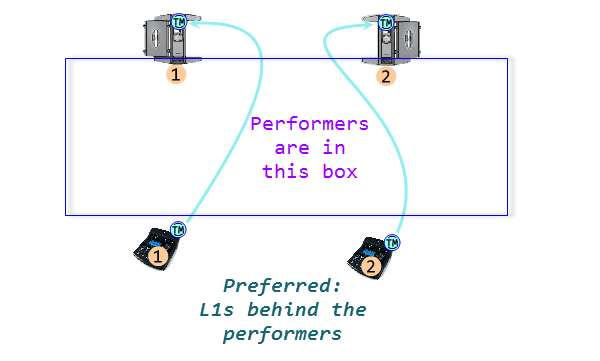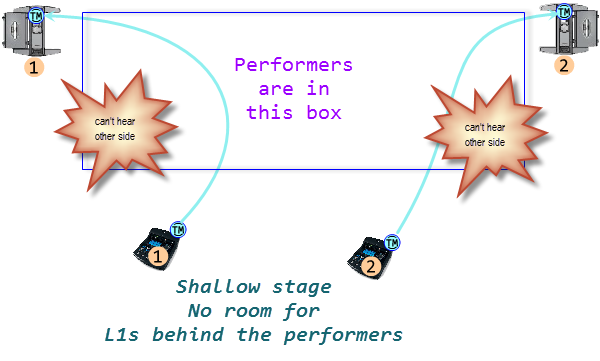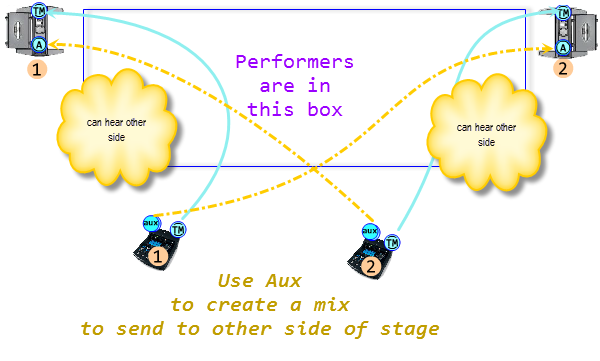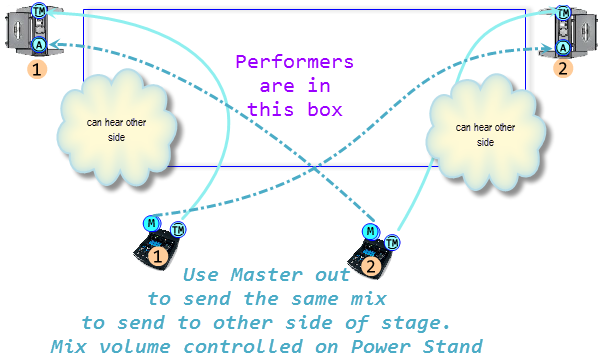Difference between revisions of "Two T1® s with Two Model II Systems"
m |
m |
||
| Line 1: | Line 1: | ||
<html> | <html> | ||
<style> | <style> | ||
| − | + | .procon {border:1px; width:600px;padding:10px;} | |
td {vertical-align:top} | td {vertical-align:top} | ||
</style> | </style> | ||
| Line 11: | Line 11: | ||
[[Image:6692-02-ST.png]] | [[Image:6692-02-ST.png]] | ||
| − | <table> | + | <table class="procon"> |
<tr><th>Pro</th><th>Con</th><tr> | <tr><th>Pro</th><th>Con</th><tr> | ||
<tr> | <tr> | ||
| Line 29: | Line 29: | ||
[[Image:6691-03-ST.png]] | [[Image:6691-03-ST.png]] | ||
| − | <table> | + | <table class="procon"> |
<tr><th>Pro</th><th>Con</th><tr> | <tr><th>Pro</th><th>Con</th><tr> | ||
<tr> | <tr> | ||
| Line 47: | Line 47: | ||
If you MUST do this, then for best results there should be at least 20 feet (6 meters) between the L1®s. | If you MUST do this, then for best results there should be at least 20 feet (6 meters) between the L1®s. | ||
| − | <table> | + | <table class="procon"> |
<tr><th>Pro</th><th>Con</th><tr> | <tr><th>Pro</th><th>Con</th><tr> | ||
<tr> | <tr> | ||
| Line 75: | Line 75: | ||
If you MUST do this, then for best results there should be at least 20 feet (6 meters) between the L1®s. | If you MUST do this, then for best results there should be at least 20 feet (6 meters) between the L1®s. | ||
| − | + | <table class="procon"> | |
| − | <table> | ||
<tr><th>Pro</th><th>Con</th><tr> | <tr><th>Pro</th><th>Con</th><tr> | ||
<tr> | <tr> | ||
Revision as of 23:46, 15 March 2013
Contents
Standard Setup with Two Model II Systems
If you have two systems made of one Model II with T1® and a B1 or B2 bass module then set up like this.
| Pro | Con |
|---|---|
|
This is the ideal, the way the L1® System was designed to be used. This allows you to give each performer control over his/her own sound. The audience experiences the Cocktail Party Effect |
It may be a challenge to get enough distance between the microphones and the L1®s |
Shallow Stage Monitoring Issue
| Pro | Con |
|---|---|
|
Pushing the L1® out to the sides beside the performers allows more room for the performers on the stage. |
Performers at the edges of the stage may have trouble hearing people on the opposite side of the stage. |
Aux Output to Opposite Model II
If you MUST do this, then for best results there should be at least 20 feet (6 meters) between the L1®s.
| Pro | Con |
|---|---|
|
Allow better monitoring for performers so they can hear the performers on the other side of the stage. Using Aux allows you to create a separate mix to be sent to the opposite side of the stage. The Aux volume outputs from each channel can be controlled at the T1® |
Decreased gain before feedback (greater likelihood of feedback). More microphones per system, and each microphone is heard through two systems Multiple Source Interference - hollow or ringy sounding vocals, uneven distribution of the bass. T1 Aux Output - not difficult to set up, but inconvenient to manage during a live show. No Reverb on Aux - the Aux output does NOT include Reverb effect. |
Analog Master Output to Opposite Model II
If you MUST do this, then for best results there should be at least 20 feet (6 meters) between the L1®s.
| Pro | Con |
|---|---|
|
Allow better monitoring for performers so they can hear the performers on the other side of the stage. Using Aux allows you to create a separate mix to be sent to the opposite side of the stage. The Aux volume outputs from each channel can be controlled at the T1®
|
Decreased gain before feedback (greater likelihood of feedback). More microphones per system, and each microphone is heard through two systems Multiple Source Interference - hollow or ringy sounding vocals, uneven distribution of the bass. T1® Master Output is the same as the ToneMatch Port output - You will need to use the Model II Power Stand Analog Input Trim to control the volume across the stage. |



